the low-fat, low-carb
SOUTHWEST
COOKBOOK
the low-fat, low-carb
SOUTHWEST
COOKBOOK
New Edition

anne lindsay greer m c cann

Copyright 2005 by Anne Lindsay Greer McCann
First Taylor Trade Publishing edition 2005 This Taylor Trade Publishing paperback edition of
The Low-Fat, Low-Carb Southwest Cookbook is an original publication. It is published by arrangement with the author. Do not begin any diet without first consulting a physician. All rights reserved.
No part of this book may be reproduced in any form or by any electronic or mechanical means, including information storage and retrieval systems, without written permission from the publisher, except by a reviewer who may quote passages in a review. Published by Taylor Trade Publishing
An Imprint of The Rowman & Littlefield Publishing Group, Inc.
4501 Forbes Boulevard, Suite 200
Lanham, Maryland 20706 Interior design by Piper E. Furbush Distributed by National Book Network Library of Congress Cataloging-in-Publication Data
McCann, Anne.
The low-fat, low-carb Southwest cookbook / Anne Lindsay Greer McCann. New ed. p. cm. Includes index ISBN: 978-1-58979-178-7 1. 2. 2.
Low-carbohydrate dietRecipes. 3. Cookery, AmericanSouthwestern style. I. McCann, Greer. Title. Title.
RM237.7.L565 2004 641.5'6384dc22 2004021047  The paper used in this publication meets the minimum requirements of American National Standard for Information SciencesPermanence of Paper for Printed Library Materials, ANSI/NISO Z39.481992.
The paper used in this publication meets the minimum requirements of American National Standard for Information SciencesPermanence of Paper for Printed Library Materials, ANSI/NISO Z39.481992.
Manufactured in the United States of America. To Don and Will, with love and admiration
And especially to Kelly
CONTENTS
by Stephan Pyles
Foreword
Stephan Pyles
Anne Lindsay Greer McCann is a true visionary and was the first person to expose the country to Southwestern Cuisine. She was also the catalyst for bringing together its key practitioners who went on to found one of the most significant regional styles of cooking in American culinary history. I still can remember with great clarity the dinners she hosted at her home twenty years ago for me, Dean Fearing, Amy Ferguson, Avner Samuel, and Robert Del Grande. We were all experimenting wildly back then, and she seemed to bring focus to a food movement that had very little structure or form. It was at one of these dinners that we cooperatively developed the menu for the 1984 inaugural dinner for the Texas Hill Country Wine and Food Festival, which has become one of the most successful and respected culinary celebrations in America today.
Annes dedication and vast knowledge of the subject through years of research and recipe development is evident through her prolific writings. After more than two decades, her style remains distinct and unique among the many stars of the movement. She has inspired an entire generation of American chefs who have become famous for cooking with the flavors of the Southwest. Bobby Flay once told me that Annes book Foods of the Sun, was an impetus in the early development of his now celebrated cooking style. Annes latest undertaking is right on target with todays interest (and sometimes obsession) in more healthful food preparation. She has blended two major trendslow-fat, low-carb and big, bold flavors.
She rightfully demonstrates that Southwestern Cuisine is inherently quite healthful and wholesome, deriving its flavors from chiles, salsas, and grilled or smoked foods. By eliminating most rice and potato dishes she successfully ties into the single most significant dietary change in America today, the restriction of carbohydrate intake. In this book, she proves that a healthful, non-fattening diet does not have to be mutually exclusive from one that is robust and flavorful. Without Annes vision and exposure to the foods of this region in the early 1980s, there simply wouldnt be the distinct and comprehensive understanding and appreciation of the cuisine that exists today. She is truly the unsung hero of the Southwestern Cuisine movement in America.
HIGH IN FLAVORLOW IN FAT
Whether you call it Contemporary Mexican or Southwest, the spirited flavors of tortilla specialties and grilled foods create an insatiable desire for salsas, quesadillas, and smoked or grilled foods.
HIGH IN FLAVORLOW IN FAT
Whether you call it Contemporary Mexican or Southwest, the spirited flavors of tortilla specialties and grilled foods create an insatiable desire for salsas, quesadillas, and smoked or grilled foods.
Surprisingly, the main ingredients in these foods (corn, rice, beans, chiles, tomatoes, and tortillas) are low in fat and high in nutritional value. However, some are high in carbohydrates. Many popular diets severely limit carbohydrates, including most fruits and vegetables. The recipes in this book do not eliminate carbohydrates, but keep them within a reasonable fat, calorie, and carbohydrate count. While not supported by scientific evidence or extensive research, I do believe that limiting fats, carbohydrates, and calories will allow you to enjoy most of the foods of the Southwest. Many fast-food restaurants have discovered that a flour tortilla is low in fat and carbs and tout them for low-carb wraps.
Cheese, a main ingredient in traditional Mexican cooking, is more of an accent in most of the recipes in this book. Those recipes that rely on cheese (Queso and some of the dips) have been reduced in calories by using low-fat cheeses or less cheese. Most important, the seasonings, chiles, varied salsas, and vinaigrettes, give satisfying flavor to the foods. This is a different way of cooking with some new ingredients. You will learn many ways to use chiles, salsas, and even cheese to give personality to your dishes. You will find a shortage of rice recipes and no recipes with pasta or white potatoes.
I find personally that if I omit these foods, including white bread, muffins, and pies, an occasional indulgence in chocolate or other light dessert makes little difference in my dress size. Desserts fall into a save and spend philosophy... save to spend on desserts.
COOKING LIGHT
Lighter, low-fat cooking can be achieved in several ways. Use lean cuts of meat and remove all visible fat from meats, fish, and poultry. Use oil sparingly, or purchase a small spray device from a cookware shop.
Oil or butter has about 120 calories per tablespoon and 12 fat grams. Dramatic amounts of fat are saved by using a variety of cooking sprays. Cooking sprays have many uses other than sauting. Butter-flavored sprays are good for softening or baking tortillas. The olive-oil sprays may be used on tossed salad greens, grilled vegetables, fish, and poultry. Many of the recipes for tacos, enchiladas, fajitas, and grilled fish emphasize seasoning, herbs, and chiles in place of fats and oils.
Fresh fruits and vegetables are used generously in main dishes and accompaniments to add flavor instead of fat. Cutting creamy salad dressings with water also saves calories and makes little difference in the taste. Most purchased, refrigerated dressings are too thick anyway. Using low- or reduced-fat cheeses saves calories as does using less cheese. Many salads may not need any dressing at all, or much less than we are used to.
CALORIES, CARBS, AND FAT
All recipes have been analyzed for fat, carbs, and calories.
Next page

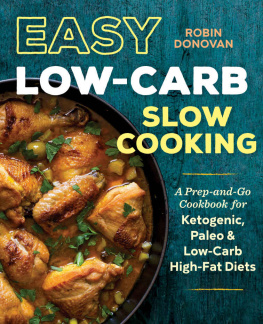
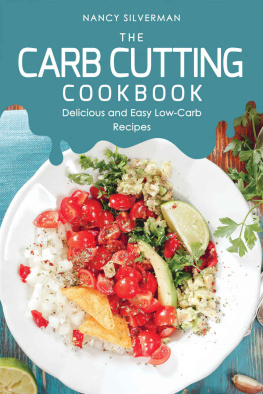

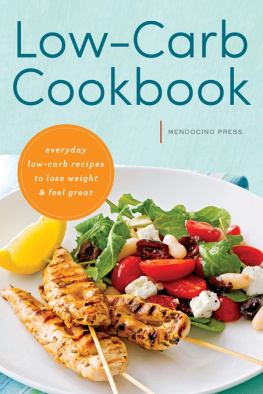
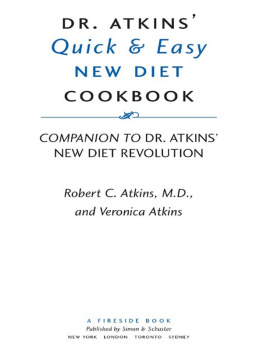
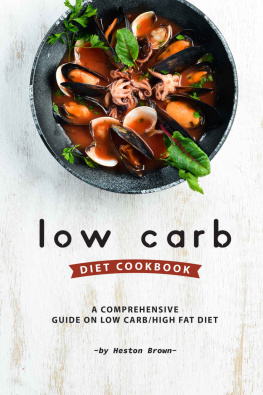
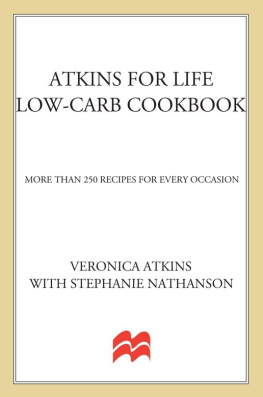
 anne lindsay greer m c cann
anne lindsay greer m c cann  Copyright 2005 by Anne Lindsay Greer McCann
Copyright 2005 by Anne Lindsay Greer McCann The paper used in this publication meets the minimum requirements of American National Standard for Information SciencesPermanence of Paper for Printed Library Materials, ANSI/NISO Z39.481992.
The paper used in this publication meets the minimum requirements of American National Standard for Information SciencesPermanence of Paper for Printed Library Materials, ANSI/NISO Z39.481992.